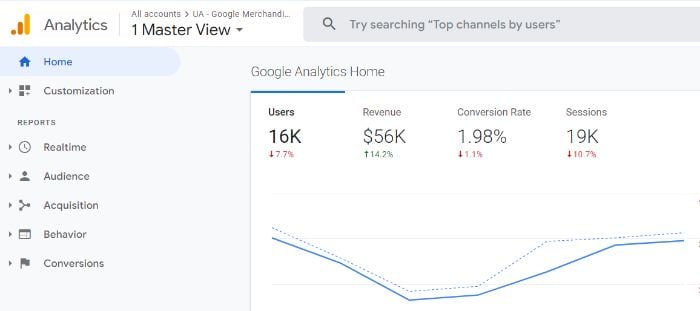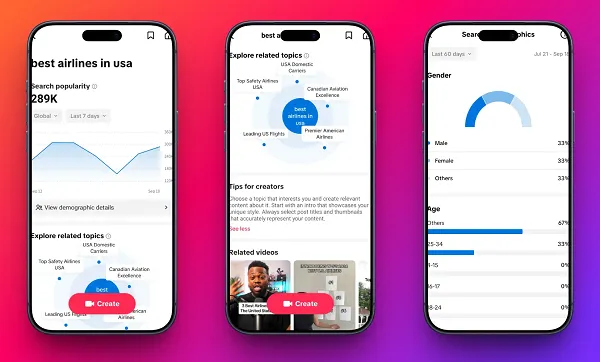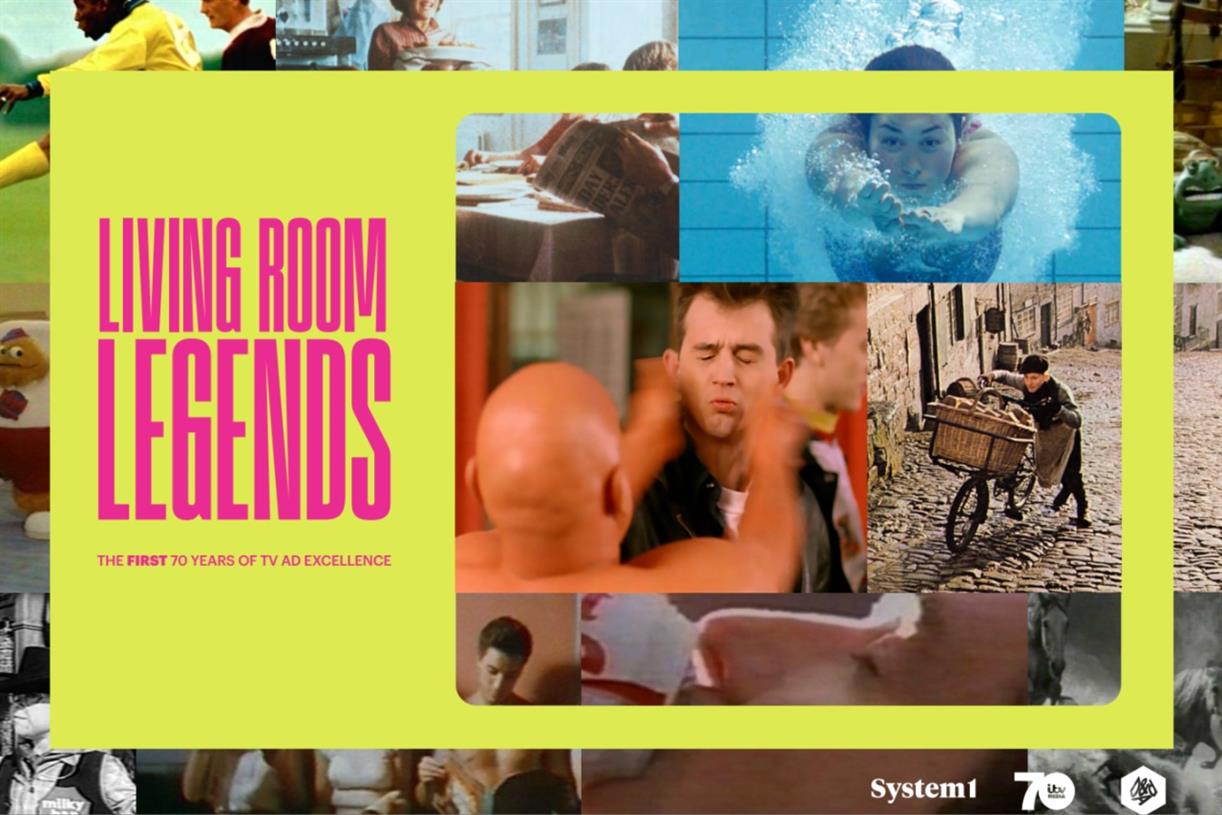B2B SaaS Marketing: The Ahrefs Guide
A buyer’s journey consists of the steps that a customer takes in order to purchase a product or a service. It’s everything from discovering the brand to comparing with competitors, checking the pricing page, chatting with sales, and...

What sets B2B SaaS marketing apart from its B2C counterpart is the length of the buyer’s journey. A buyer’s journey consists of the steps that a customer takes in order to purchase a product or a service. It’s everything from discovering the brand to comparing with competitors, checking the pricing page, chatting with sales, and so on. B2C products/services typically need less consideration. Therefore, their buyer’s journey is relatively short. B2B products/services typically need more careful decision-making. There are more decision-makers, and there’s a higher need for educational content. Therefore, the journey is longer and takes more time. That’s the theory. But how does B2B SaaS marketing work in practice? In this article, we’re sharing our take on it. A little bit about Ahrefs. We’re a bootstrapped company founded in 2011, and we recently passed $100M in ARR. Our business is an all-in-one SEO SaaS solution, and our customers are mostly businesses (small and big). We run a relatively small marketing team. Here’s what works in B2B marketing from our experience. It’s true that marketers bridge the gap between the company and the customers. They’re constantly balancing between business objectives and what the user wants. Could Portfolios be a game changer for rank tracking? Why track 1 keyword per page when pages rank for more than 1 term. Here I see 45.7k keywords for 147 pages (screenshot). What do you think, should we add average position, share of voice, and bring some competitor data in? https://t.co/Lvsvjrv1cY pic.twitter.com/fA0v8MU7Tl But you can fulfill that role effectively only if you become a power user of the product, aka your own customer. This allows you to do four extremely important things: Obviously, the only way to achieve that is to spend a lot of time with the product. But having some kind of process in place helps. In the case of Ahrefs, that’s mainly two things: Let’s unpack this. Product-led content is a strategy where you prioritize topics where you can help people solve problems with the help of your product. SEO content is content designed to rank in the search engines. When you combine those two concepts, you get convincing messaging with a free distribution mechanism. For example, there are tens of thousands of monthly searches for how to do keyword research, and our blog post featuring Ahrefs’ Keywords Explorer ranks in the top five for many of them. Thanks to that, the article generates thousands of visits each month. This strategy allows you to leverage search demand on YouTube too. You can even repurpose the same content. So a product-led content piece like that can do three things simultaneously: And because of that trifecta, we’re not thinking in terms of mapping content to stages of the marketing funnel. Instead, we’re trying to prioritize topics that show a high business potential. You can learn how to replicate this strategy in our guide to product-led content or watch our short video. Original research is great for two things: backlinks and thought leadership. Backlinks are links to your site from other sites. They are important because they help you rank in Google (one of the key ranking factors). Original research, such as data studies, case studies, industry surveys, etc., attracts backlinks because other authors use them as sources. In turn, pages with a lot of backlinks accumulate authority, which you can guide to other valuable pages on your site to help them rank (see Middleman Method). For example, our study on why most content on the web gets no organic traffic earned 5.9K backlinks from 2.8K referring domains and still keeps earning them without any effort from our side. As for thought leadership, the more competitive your SaaS niche is, the more you need it. When other sites mention your research, you start to be viewed as a trusted, highly regarded brand. You’re no longer a “stranger,” and that really helps with sales. Here are some ways you can come up with ideas for your research: To find popular topics in our niche, we often use our own Content Explorer (again, dogfooding). For example, to find relevant research about SEO, we can look for content that has “study” in the title and at least 200 referring domains (to weed out some less popular ones). In SaaS, one of the biggest challenges is churn—the proportion of customers who stop paying for your product or service. We never believe in any marketing hacks that supposedly stop people from canceling their plans when they want to. Instead, we’re trying to educate users so that they know how to use Ahrefs and get the most value out of the product. Product-led content is one example, but there are more. For example, if a user is just starting out with Ahrefs or SEO, they can find complete courses in our Academy. For those customers who prefer live training, we host regular onboarding webinars on our community platform. And if the user ever feels lost, they will find helpful content right inside the tool. Ideas for educational content can come from different sources: keyword research, support, interviews with customers, competition, or just being a part of the process when introducing a new feature. There’s nothing innovative in our approach, but it doesn’t need to be. Educational content is not about originality but the helpfulness and thoroughness of the context itself. At the startup/small company level, what’s important for SaaS companies at industry events is networking rather than sales. You can learn a lot from other SaaS companies and people who use their products. You may even meet your own users. Thing is, you don’t really need a large budget to attend industry events because you don’t really need to be an exhibitor or a sponsor. Bloggers, YouTubers, TikTokers, and podcast hosts are often open to different forms of partnerships. These can include being featured as a sponsor, sponsored articles, or a shoutout during an interview on a podcast. The reach and influence of content creators are a great opportunity for brands. Chances are, some creators are already attracting your target audience. But should you expect instant sales from this channel? In our experience, that’s a definitive no. Remember about the buyer’s journey—businesses need more time. What you effectively can do with partnerships is generate brand awareness in a way that your audience can appreciate (you’re supporting their favorite creators). Furthermore, you can try promoting something that needs less consideration than your core product. For instance, a free tool or a free course. Think of it as a faster route to your brand. In our case, we usually promote the free Ahrefs Webmaster Tools instead of our premium toolkit. I also asked our partnership manager, Igor Gorbenko, for a few tips, and here’s what he said: You’ll only get the hang of this tactic by diving in and doing it. I mean, your best prospects will probably come through references, which will come to you as you go. Also, a good content creator won’t necessarily make a good partner. You need to do due diligence and invest in those who are willing to invest their time in you. By the way, want to see what we learned after spending over $50K on sponsored podcasts? We’re talking about resources that help the sales department engage with bigger accounts and close deals: pitch decks, articles, landing pages, battle cards, brochures for different types of accounts, etc. The sales team is going to get a ton of uncomfortable questions related to your competitors, use cases, and every aspect of the product’s functionality. Marketing is usually the best place to answer these questions. But to be really helpful to sales, it’s best to answer those questions before they come. No need for a complex system here. To start off on the right foot, you need only a few things. These are to: Promoting your product in English is the best bet to get customers all over the world. But if you’re starting to see non-English-speaking countries becoming regular customers or competitors showing interest in those markets, you may need to invest in local marketing. For example, increasing our brand’s awareness in Spanish-speaking countries required dedicating one person to just that. My colleague, Erik Sarissky, spends most of his time being physically present in those countries and networking with local communities and influencers. The reason why this approach works probably won’t surprise you. As Erik puts it: This is a market where people prefer to make deals in the local language, despite the fact English is usually not a problem. People also appreciate that we’re making an effort to be closer to them. It really helps to show our commitment. The takeaway here is that you may need to take local marketing into consideration while building a global marketing strategy. Think about it next time you’re preparing your budget. Maybe there’s already someone on your team who already has the necessary skills or is native to a key market? Marketing is not about pouring everything into one pot. It’s about finding the right mix. To find the right mix, you need to experiment. We’ve done our fair share of that, and we still do. Here are some things we tried or seriously considered. It’s possible you’ll find something that might work for your business: Boostrapped Ahrefs crossed $100M in ARR without these things: No Google Analytics + discontinued midway: 1/2 Here are a few more tactics that tend to work in B2B SaaS: There are many tricks in the book, but it’s not about how many you use. Small teams should focus on the true value drivers and then allocate some resources for experimentation. So experiment and scale what works. 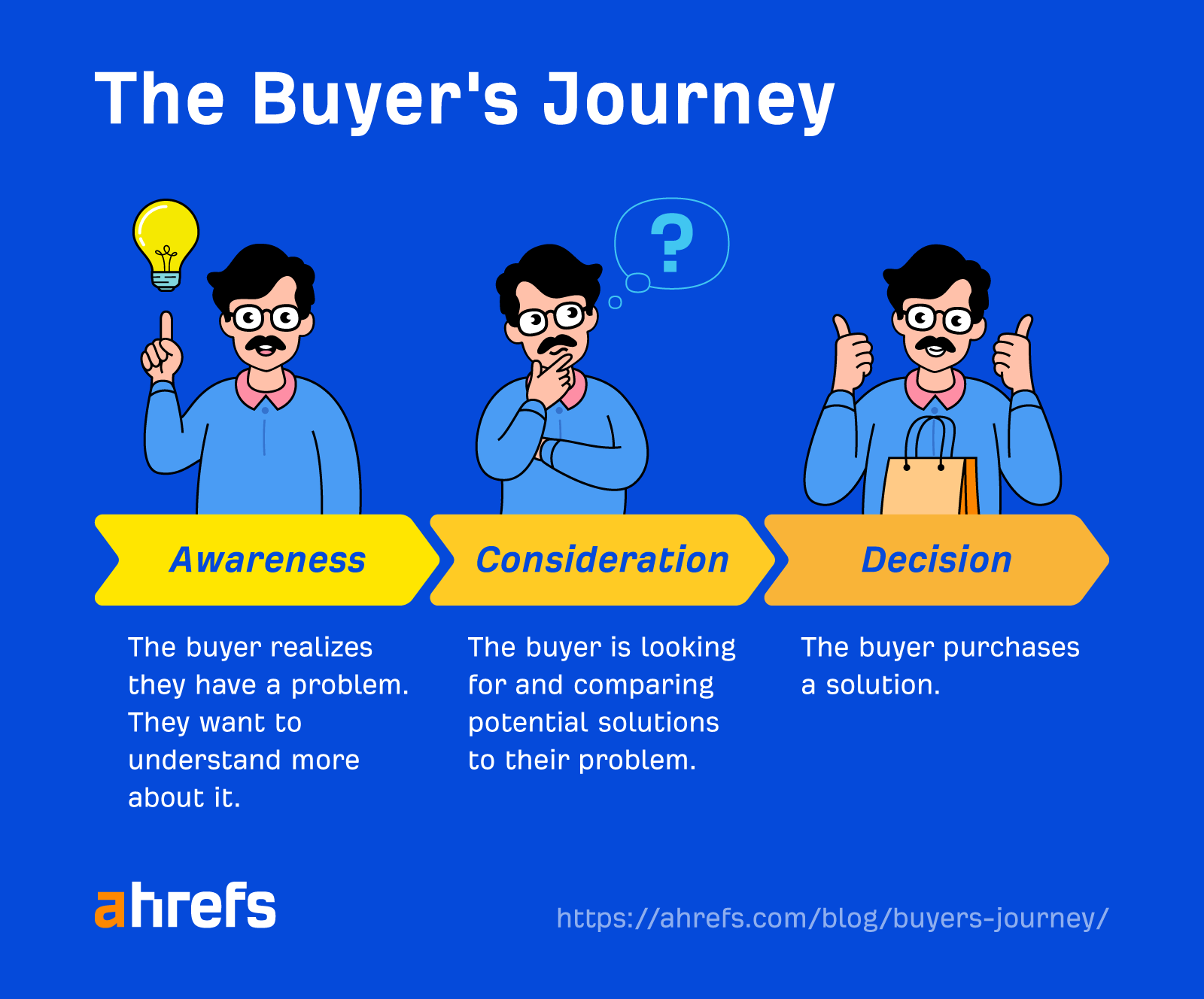
Take a stake in product development
Create product-led, SEO content
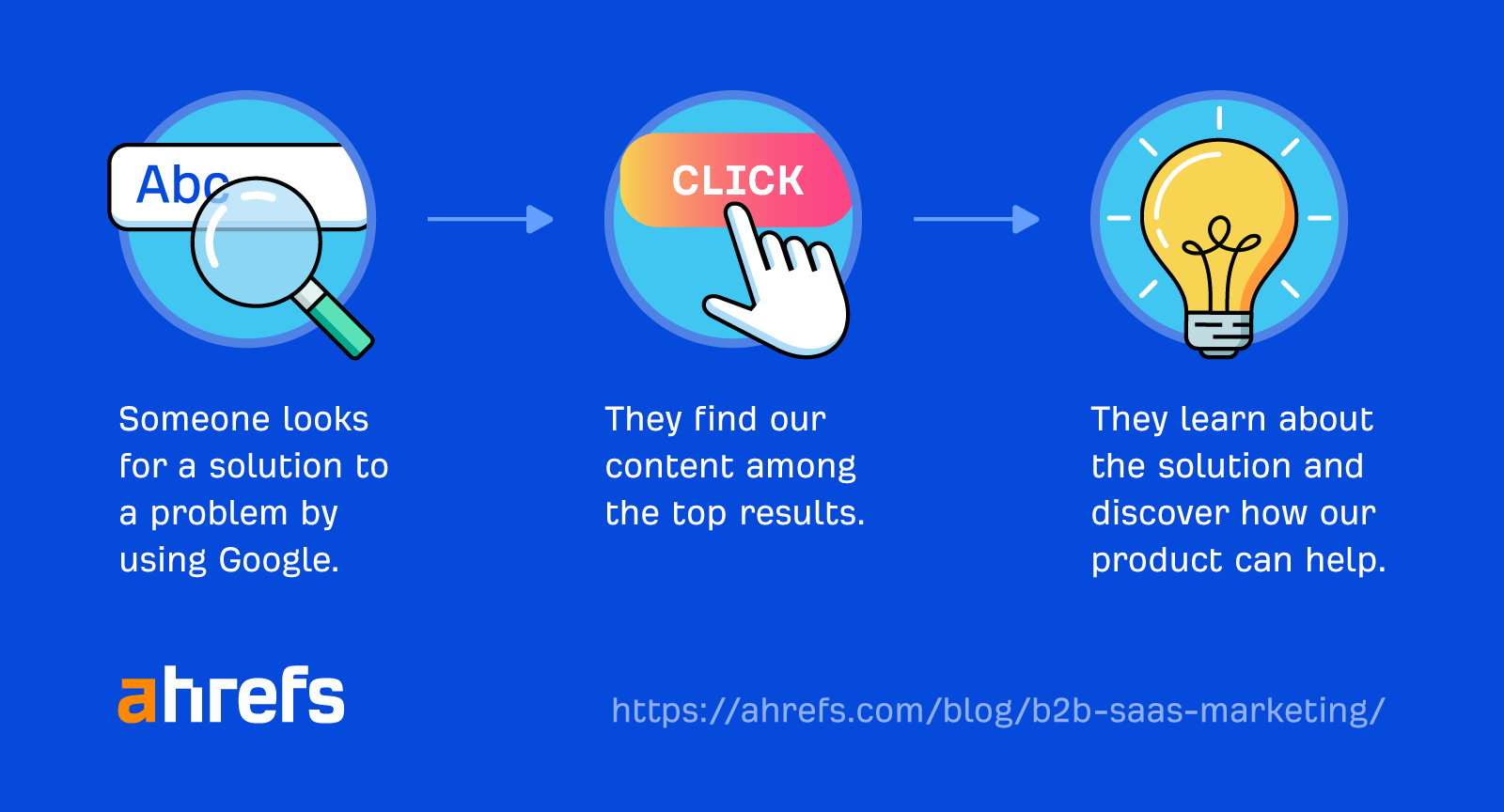
 Data via Ahrefs’ Site Explorer.
Data via Ahrefs’ Site Explorer. Data via Ahrefs’ Site Explorer.
Data via Ahrefs’ Site Explorer.

Publish original research
 Data via Ahrefs’ Site Explorer.
Data via Ahrefs’ Site Explorer.

Retain users by educating them

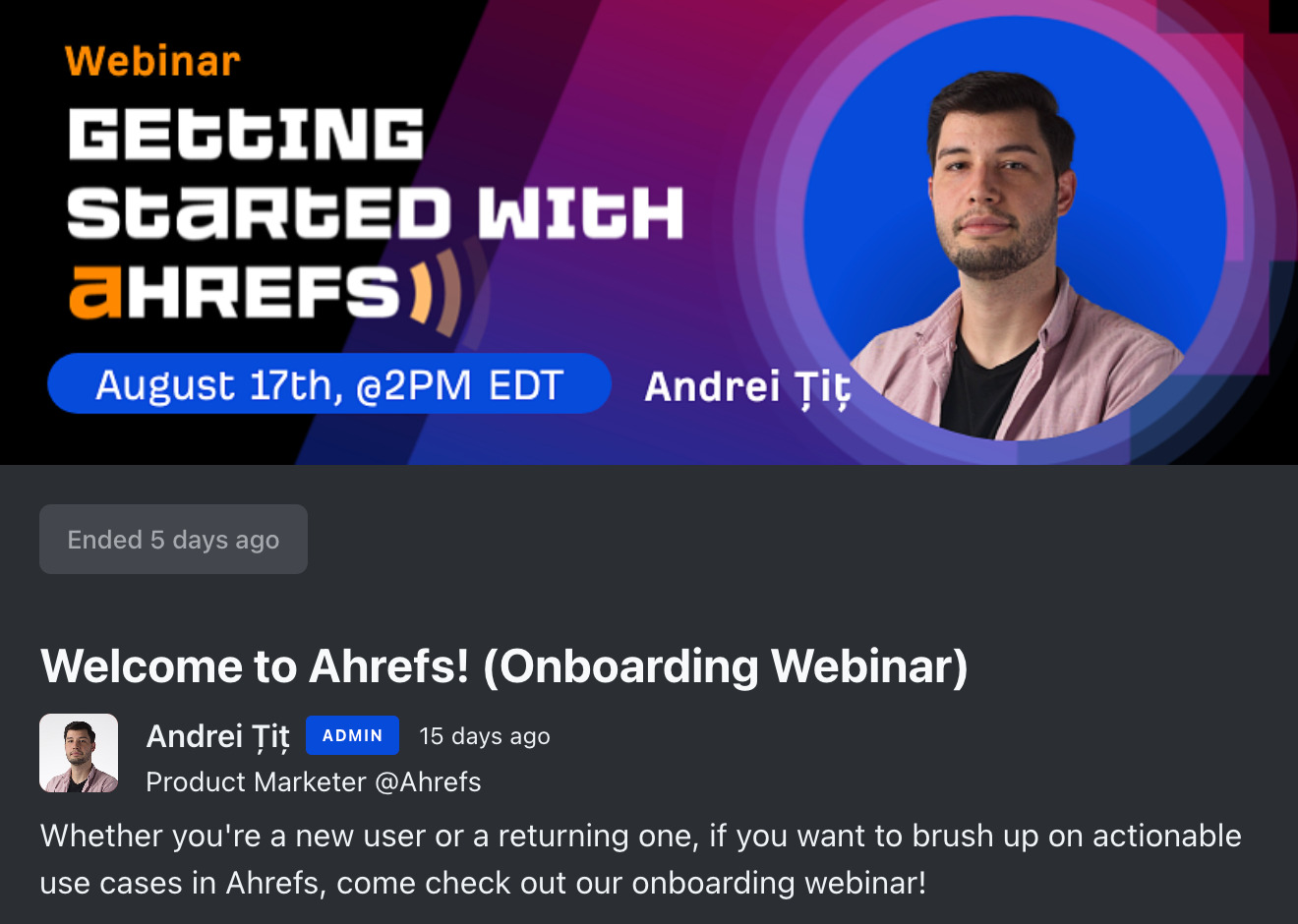

Network at industry events
 SaaStock Dublin. No booth, not a sponsor, but we’re there.
SaaStock Dublin. No booth, not a sponsor, but we’re there.Partner up with content creators in your niche
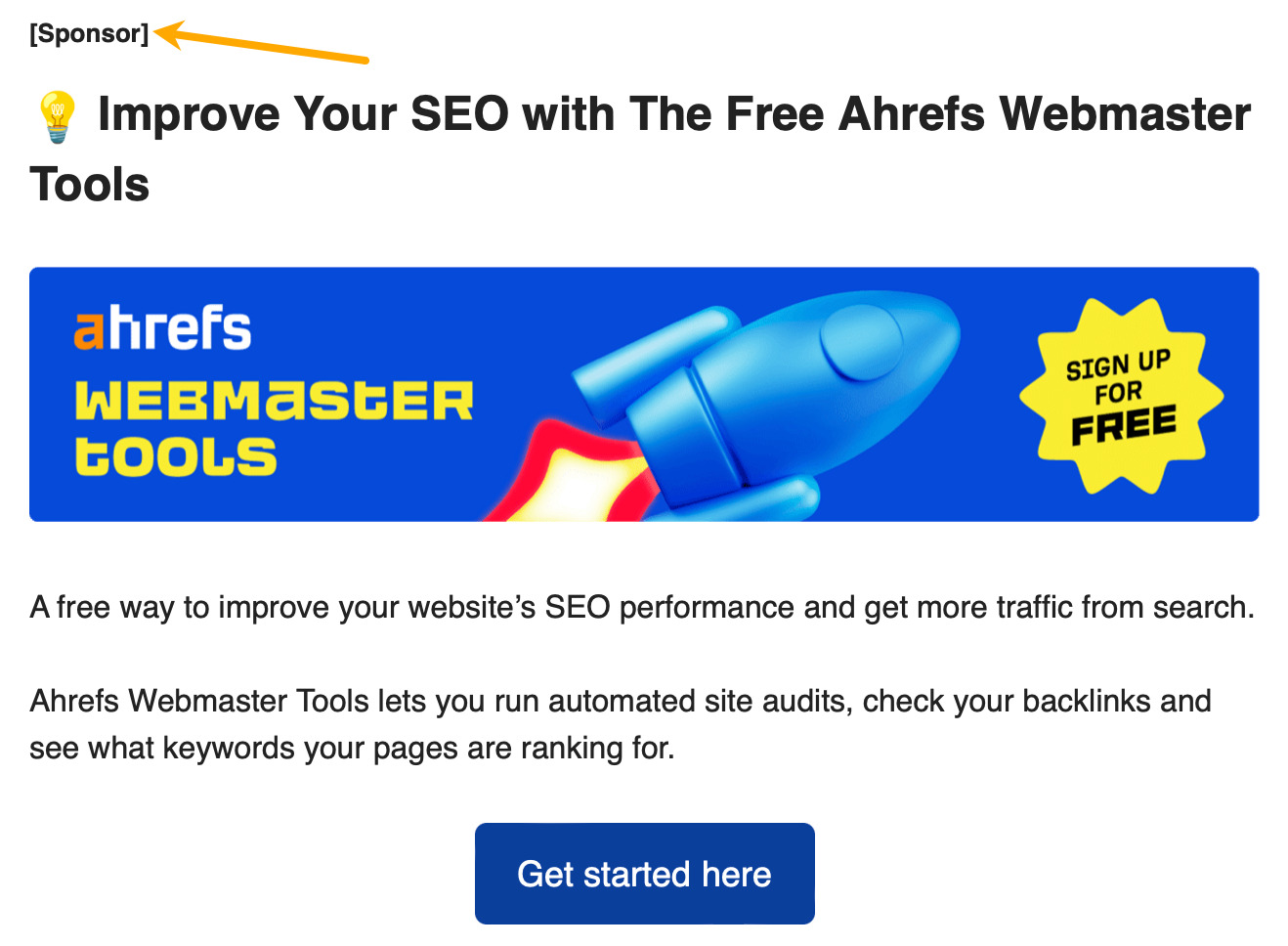
Don’t sleep on sales enablement
Use local marketing to penetrate key markets
 Erik Sarissky giving a speech at SEO On The Beach.
Erik Sarissky giving a speech at SEO On The Beach.
No conversion tracking/optimisation
No retargeting
No A/B testing
No discounts
No bidding on competitors’ keywords
Affiliate program
Free trialFinal thoughts

 Tekef
Tekef 









